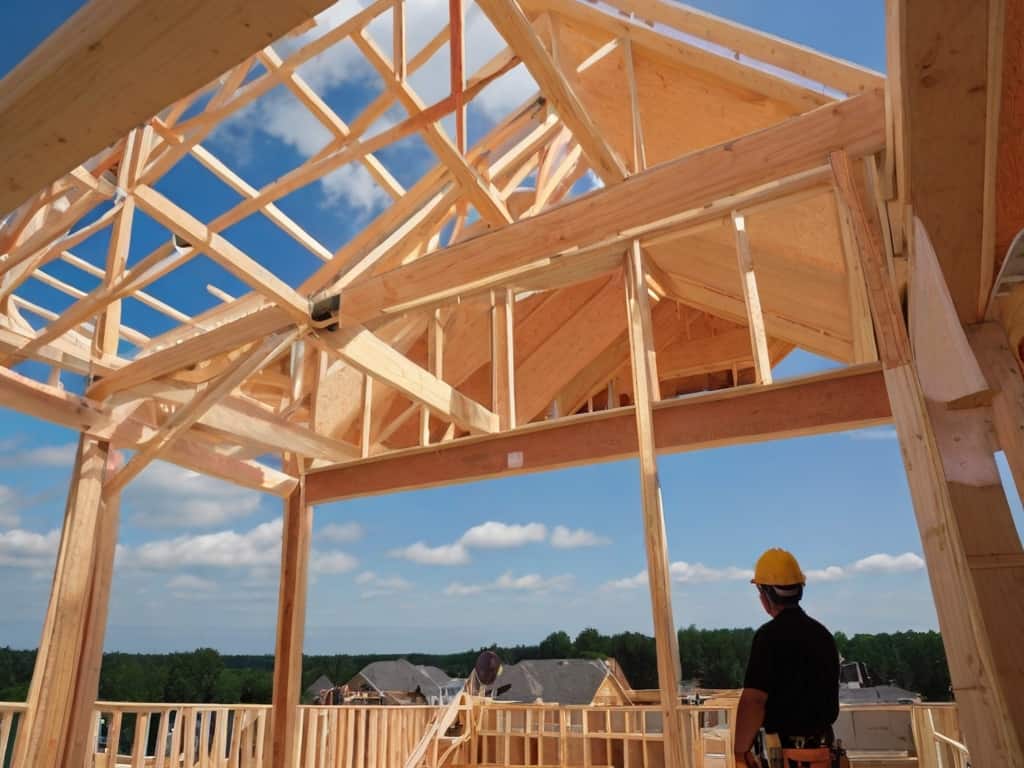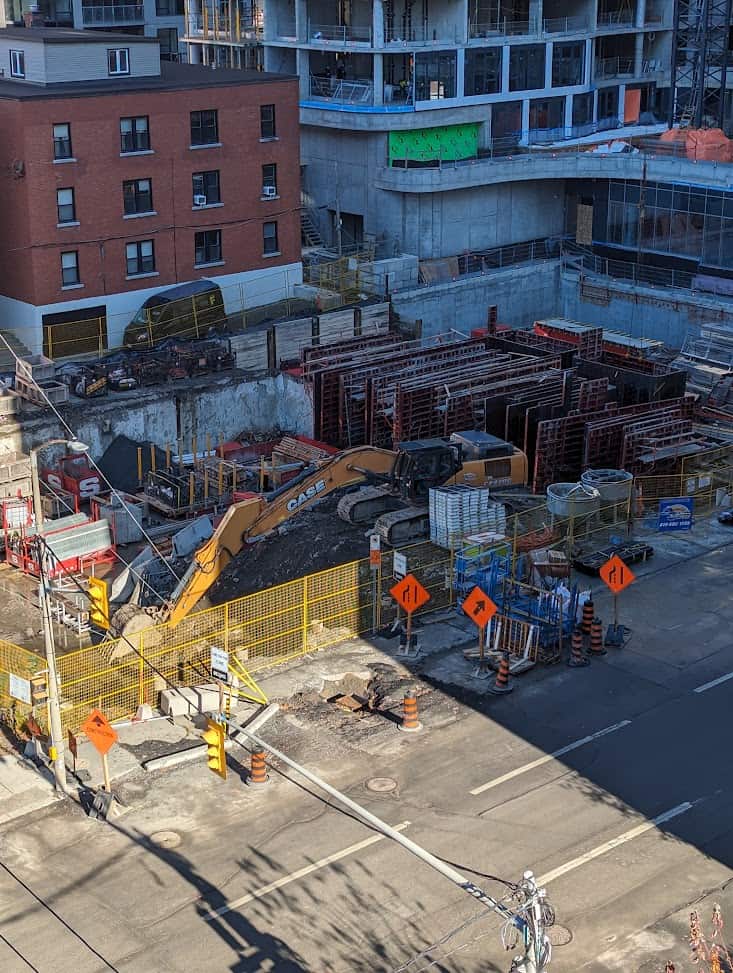In recent years, Canada’s construction industry has been grappling with soaring costs, a trend that has sparked widespread concern and debate. The escalation in construction expenses not only impacts the industry but also reverberates through the economy, affecting everything from housing affordability to public infrastructure projects. This article delves into the multifaceted reasons behind these escalating costs. From economic influences and market dynamics to labor shortages and specific regulatory challenges in provinces like Ontario, we explore the complex tapestry of factors contributing to Canada’s construction cost conundrum. As we navigate through these elements, we also consider the potential pathways towards mitigating these challenges and the future outlook of Canada’s construction landscape.

Economic and Market Influences
The Canadian construction industry, a critical sector of the national economy, has experienced a notable escalation in costs in recent years. This increase is not attributable to a single factor but rather a confluence of economic and market influences that have collectively exerted upward pressure on construction expenses.
1. Pandemic-Induced Challenges: The onset of the COVID-19 pandemic created unprecedented disruptions in global supply chains, leading to a scarcity of raw materials vital for construction. This scarcity, coupled with increased demand as the economy rebounded, resulted in a substantial hike in material costs. From lumber to steel, the prices of essential construction materials skyrocketed, directly impacting the overall cost of construction projects.
2. Interest Rate Fluctuations: The economic landscape of Canada, like many other countries, has been significantly influenced by interest rate changes. Higher interest rates have a twofold effect on construction costs. Firstly, they increase the cost of borrowing for construction projects, directly raising expenses. Secondly, they impact the real estate and development sectors, which are intricately linked to construction.
3. Labour Market Dynamics: The Canadian construction industry has not been immune to the broader labour market shifts. The pandemic accelerated retirements and prompted reevaluations of career choices, leading to a shortage of skilled labour. This shortage has driven up wages, further contributing to higher construction costs.

4. Housing Market Pressures: Canada’s housing market has witnessed a surge in demand, partly fueled by low-interest rates and a desire for more spacious accommodations during the pandemic. This demand has put additional pressure on construction resources, further elevating costs.
5. Global Economic Trends: Global economic trends, including trade policies and international relations, have a significant impact on the cost of construction materials. Fluctuations in these areas can lead to variability in material costs, affecting the construction industry in Canada.
Understanding these economic and market influences is crucial for stakeholders in the Canadian construction industry. By recognizing these factors, industry participants can better navigate the challenges and plan for future projects.
Labour Shortages and Skilled Trades
The construction industry in Canada, like many other sectors, is currently facing a significant labor shortage, particularly in skilled trades. This shortage is not a sudden occurrence but the result of various factors evolving over the years, profoundly affecting construction costs.
1. Aging Workforce: A substantial portion of the construction workforce is nearing retirement age. With a significant percentage of skilled tradespeople set to leave the industry, there is an impending gap in experience and expertise. This demographic shift puts pressure on the industry to find and train new workers, a process that is both time-consuming and costly.

2. Training and Certification Challenges: The path to becoming a skilled tradesperson in Canada is often long and complex. The rigid structure of training programs and certification processes can be a barrier to entry, discouraging potential new entrants. Moreover, the existing certification procedures may not fully recognize the skills acquired at different stages of training, leading to inefficiencies in qualifying workers.
3. Pandemic Impact: The COVID-19 pandemic exacerbated the labor shortage in the construction industry. Many workers were either laid off or chose to leave the industry during the pandemic, and not all have returned. This sudden depletion in workforce added to the already existing shortage of skilled labor.
4. Wage Inflation: With the demand for skilled labor exceeding supply, wages in the construction sector have risen. While this is beneficial for workers, it contributes to higher construction costs as labor expenses form a significant part of project budgets.
5. Recruitment and Retention Issues: Attracting new talent to the construction industry is a growing challenge. The sector competes with other industries for young workers, many of whom are seeking careers with different work environments and opportunities. Retaining skilled workers is also a challenge, further exacerbating the labor shortage issue.
Addressing these labor shortages and skilled trade challenges is crucial for stabilizing and potentially reducing construction costs in Canada. It requires a concerted effort from industry stakeholders, educational institutions, and government bodies to create more accessible training programs, improve certification processes, and enhance the appeal of careers in construction.
Regulatory and Legislative Factors in Ontario
Ontario’s construction industry faces unique regulatory and legislative challenges that significantly contribute to the high costs of construction projects in the province.
1. Regulatory Framework Complexity: The construction industry in Ontario is governed by a complex regulatory framework that impacts everything from project planning to execution. This complexity can lead to delays and increased administrative costs, which ultimately contribute to higher overall construction costs.

2. Bill 66 – Restoring Ontario’s Competitiveness Act: Introduced in 2019, Bill 66 aimed to reduce construction costs by allowing public entities to consider all qualified companies for construction projects, irrespective of union affiliations. However, its inconsistent adoption across the province has led to varied impacts on construction costs. Cities like Waterloo and Hamilton, which adopted the bill, saw significant cost savings, whereas Toronto, which opted out, witnessed a substantial increase in construction costs.
3. Project Labour Agreements (PLAs): PLAs can restrict competition by limiting the pool of bidders for public construction projects to certain unions. This lack of competition can drive up costs. The recommendation to prohibit public entities from entering into PLAs aims to increase competition and potentially lower costs.
4. Certification and Training Regulations: The skilled trades training programs in Ontario are rigid, contributing to a shortage of qualified workers. The recommendation for a modular certification system is designed to streamline the process and increase the number of certified workers, potentially easing labor shortages and reducing labor costs.
5. Local vs. Provincial Policies: Differing policies and regulations at the local and provincial levels can create an uneven playing field, affecting construction costs differently across Ontario. A more standardized approach could lead to more consistency in costs.

Understanding these regulatory and legislative factors is crucial for stakeholders in Ontario’s construction industry. It highlights the need for continuous evaluation and potential reform of policies to balance the competing interests of cost control, quality, and fairness in the industry.
Solutions and Future Outlook
The challenge of high construction costs in Canada, particularly in Ontario, requires multifaceted solutions and a forward-looking approach. Here are some potential strategies and insights into the future of the construction industry:
1. Streamlining Regulatory Frameworks: Simplifying and standardizing regulatory processes across provinces, especially in Ontario, can reduce administrative burdens and associated costs. A more unified approach can lead to efficiencies in project planning and execution.
2. Enhancing Skilled Labour Training and Certification: Reforming training and certification programs to make them more accessible and efficient can address the skilled labor shortage. A modular certification system, as recommended, can speed up the process of certifying skilled workers, thus increasing the labor pool.
3. Encouraging Competition in Public Projects: Policies that encourage open competition for public construction projects, like the wider adoption of Bill 66, can lead to cost savings by preventing monopolies and fostering a competitive bidding environment.
4. Addressing Supply Chain Disruptions: Establishing more resilient supply chains for construction materials can mitigate the impact of global disruptions, helping stabilize material costs.
5. Investing in Technology and Innovation: Embracing technological advancements and innovative construction methods can lead to cost savings and efficiencies. This includes the use of prefabricated materials and modern construction techniques.

While the construction industry in Canada faces challenges, there are opportunities for improvement and growth. With concerted efforts from government bodies, industry stakeholders, and educational institutions, the sector can overcome these hurdles. The future of construction in Canada holds potential for more cost-effective and efficient practices, provided these solutions are effectively implemented.
The high construction costs in Canada, and particularly in Ontario, are a multifaceted issue influenced by economic, regulatory, and labor-related factors. Through this exploration, we’ve uncovered the complexities behind these rising costs, from market dynamics and labor shortages to specific legislative challenges in Ontario. Looking ahead, the industry’s ability to adapt through streamlined regulations, improved training programs, competitive public project policies, and technological innovation will be key to managing and potentially reducing these costs. As Canada’s construction sector navigates these challenges, it stands on the brink of transformative changes that could reshape its economic landscape for years to come.
